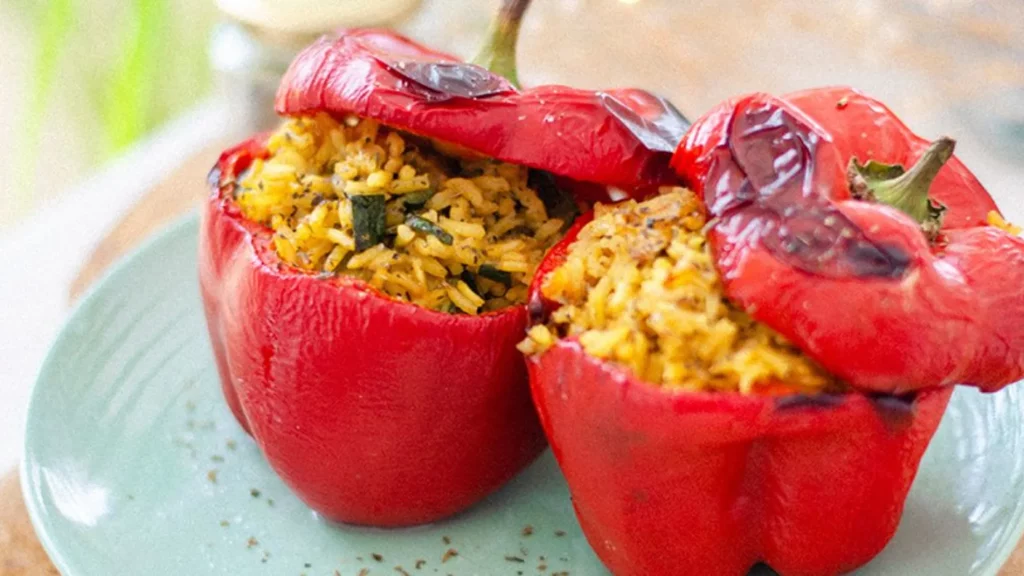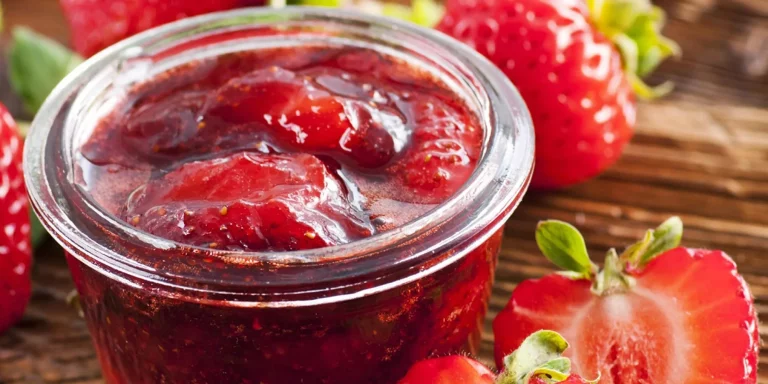
Valencia, the land of abundant vegetables and savory rice dishes, offers much more than just the renowned Paella. Among its culinary treasures are traditional recipes born from the region’s fertile soil and favorable climatic conditions. These dishes, such as esgarraet, olleta, and bajoques farcides, showcase the marriage of fresh vegetables with another prized ingredient of Valencian gastronomy: rice.
In different parts of the Valencian Community, the term “bajoques” refers to green beans (while “pepper” is referred to as pebrera, pimentó, or pebrot). However, in the area of Alcoy, bajoques are peppers. To delve deeper into this culinary specialty, we visited the restaurant at Parador de El Saler, nestled between the Albufera Natural Park and the Mediterranean Sea, just half an hour from the city of Valencia. Under the guidance of Chef José Alcarazo, the cuisine at this establishment is inspired by regional recipes, emphasizing traditional dishes crafted with fresh seafood and produce from the local orchards. The bajoques farcides at Parador showcase the authentic Alcoyano style, featuring pork and tomato. If you’re keen to master the art of preparing this dish, watch the video above.
Ingredients
- Serves: 4
- 100 ml extra virgin olive oil
- 100 g lean pork, diced
- 100 g chicken breast, diced
- 1 tablespoon sweet paprika
- 100 g serrano ham, finely diced
- 2 cloves garlic, minced
- 500 g ripe tomatoes, grated
- Parsley, chopped
- 16 saffron threads
- 400 g bomba rice
- 4 large red peppers
- Spinach, arugula, or sprouts for serving
Instructions
- Heat the olive oil in a skillet. Once hot, add the diced pork, chicken, season with sweet paprika, and stir well. Then, add the diced ham.
- Add minced garlic and paprika. Cook while stirring to prevent burning.
- Add bomba rice and stir until it starts to turn translucent.
- Add grated tomatoes and saffron. Cook until the tomatoes reduce by half, then add chopped parsley and season.
- Cut the tops off the peppers in a round manner to create lids, set the lids aside. Remove seeds from inside the peppers and fill with the rice mixture. Replace the lids and secure them with toothpicks to prevent separation during cooking.
- Place the peppers in a baking dish or clay pot, add a little water to the bottom, and cover with aluminum foil. Bake at 180ºC for approximately one hour.
- Carefully remove the toothpicks. Serve in a deep plate, accompanied by tender leaves or sprouts, and a drizzle of extra virgin olive oil to finish.
Exploring the Recipe
Now, let’s delve into the preparation of this traditional Valencian dish step by step, exploring the techniques, flavors, and cultural significance behind each component.
1. Sautéing the Meat Mixture
- The recipe begins with heating extra virgin olive oil in a skillet, infusing the dish with the characteristic flavor of Mediterranean cuisine.
- Diced lean pork and chicken breast are added to the skillet, along with a tablespoon of sweet paprika for a touch of warmth and depth.
- The addition of serrano ham brings a rich, salty flavor to the dish, contributing to its complexity.
2. Incorporating Aromatics
- Minced garlic is introduced to the skillet, infusing the meat mixture with its pungent aroma and savory essence.
- Paprika is stirred in, enhancing the dish with its vibrant color and subtle smokiness, a hallmark of Spanish cuisine.
3. Adding Bomba Rice
- Bomba rice, renowned for its ability to absorb flavors while remaining firm and distinct, is added to the skillet, forming the hearty base of the dish.
- Stirring the rice until it becomes translucent, or “nacarar,” ensures that it is properly coated with the flavors of the meat and aromatics.
4. Incorporating Grated Tomatoes and Saffron
- Grated ripe tomatoes are added to the skillet, imparting their sweet-tart flavor and vibrant color to the dish.
- Saffron threads, prized for their exquisite aroma and golden hue, are added to elevate the flavor profile of the dish, infusing it with subtle floral notes.
5. Preparing the Peppers
- Red peppers are halved and deseeded, creating a hollow cavity perfect for holding the flavorful rice filling.
- The rice mixture is spooned into the peppers, filling them to the brim with savory goodness.
- The pepper tops are replaced and secured with toothpicks, ensuring that the filling remains intact during the baking process.
6. Baking to Perfection
- The stuffed peppers are placed in a baking dish or clay pot, nestled snugly together to prevent tipping.
- A small amount of water is added to the bottom of the dish, creating steam to help cook the peppers evenly.
- The dish is covered with aluminum foil to trap moisture and heat, allowing the peppers to steam gently until tender.
7. Serving and Garnishing
- Once baked to perfection, the stuffed peppers are carefully removed from the oven.
- Toothpicks are gently removed from the peppers, and they are plated in shallow bowls, their vibrant colors and enticing aromas inviting eager diners to indulge.
- Tender leaves of spinach, arugula, or sprouts are scattered over the peppers, adding a fresh, verdant contrast to the rich flavors of the dish.
- A final drizzle of extra virgin olive oil provides a luscious finishing touch, enhancing the dish with its fruity notes and silky texture.
Cultural Significance
Bajoques farcides encapsulates the essence of Valencian cuisine, celebrating the region’s bountiful harvests and culinary heritage. From the fertile fields of the Valencian countryside to the bustling markets of its vibrant cities, the dish pays homage to the agricultural traditions and culinary ingenuity that have shaped the region’s identity.
Conclusion
Bajoques farcides is more than just a stuffed pepper dish; it is a celebration of Valencia’s rich culinary heritage and a testament to the region’s vibrant flavors and traditional techniques. Whether enjoyed at a seaside taverna overlooking the Mediterranean or prepared with love in the comfort of your own kitchen, this iconic dish invites diners on a sensory journey through the sun-drenched landscapes and rich traditions of the Valencian countryside. So, gather your ingredients, roll up your sleeves, and embark on a culinary adventure that will transport you to the heart of Valencia with every delicious bite.

